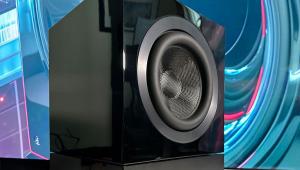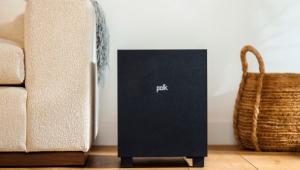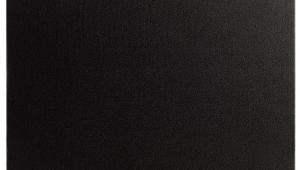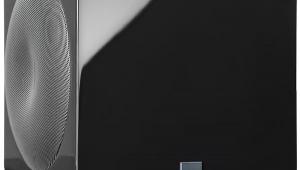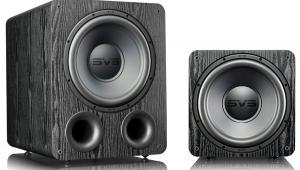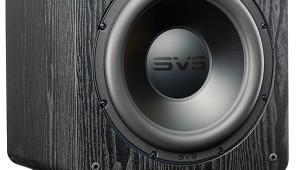REL Acoustics Habitat1 Subwoofer Page 2
Music
I needed a deep yet melodic bass line to adjust the Habitat1’s crossover for use with the Hsus, so I started my listening with the modern jazz classic “Sweet Georgia Bright,” from saxophonist Charles Lloyd’s great live recording Rabo de Nube. Per REL’s instructions, I started with the volume and crossover point set as low as they would go, then turned up the volume until the balance sounded about right, and finished by raising the crossover frequency until the sub blended well with the Hsus. After a half-dozen “get up, adjust the sub, then sit back down and listen” cycles, I had it dialed in pretty well, so I sat back to enjoy Lloyd and his band.
Rather than taking over all the bass duties, the Habitat1 augmented the sound of the Hsus in a nice way. As we heard in our minispeaker roundup last year (Sound & Vision, April/May 2013 and soundandvision.com), the Hsu is fairly full sounding, but still, when I unplugged the Habitat1, the system sounded comparatively thin. The extra half-octave or so of bass the Habitat1 added made a huge difference. So if the goal is to add bass to a small stereo system, and do it in a décor-friendly way, the Habitat1 succeeds.

While I enjoyed the sound, I can’t say I experienced any sort of bass nirvana that I couldn’t have achieved using a standard subwoofer crossover. The Hsus didn’t seem to blend any better with the subwoofer using REL’s high-level connection than they have with other subs fed directly from the Outlaw’s line-level subwoofer output. I also noticed that the bottom notes in Reuben Rogers’ bass lines didn’t have the oomph I’m used to hearing with traditional subs. I tried turning the high-level input control up on the Habitat1, but it didn’t give me much more output.
Curious to explore the Habitat1’s limits, I put on Mötley Crüe’s beloved standard “Kickstart My Heart” and brought the volume up. True to what we found in our minispeaker test, the Hsus withstood the punishment, their sound distorting only moderately even though their woofers were pumping furiously. The Habitat1, though, was pretty much out of the game—held back, I guessed, by an aggressive internal limiter. With the Habitat1’s limiter apparently clamping down on the fun, the sound got thin. Again, cranking up the level had little or no effect because of the limiter.
Yes, it’s true that setting a low threshold for the limiter protects the small drivers and minimizes harmonic distortion, but this time it seemed to go too far, restricting the dynamic range of the bass relative to the midrange and treble. I’ve tested single-driver 8-inch subwoofers, such as Velodyne’s $459 EQ-Max 8, that produce greater output with 24 percent less driver area. I’ve done CEA-2010 output measurements on both subs, and while the Habitat1 outperforms the EQ-Max 8 below 40 hertz, the EQ-Max 8 produces 6.8 dB more average output from 40 to 63 Hz.
Typical pop fare, such as R.E.M.’s “7 Chinese Brothers” and the English Beat’s “Ranking Full Stop” showed that the Habitat1 sounded quite competent when used at moderate, even slightly loud levels, but it didn’t have a lot of deep bass output. For a sub of its size, that’s fine, but given the Habitat1’s high price tag, I expected more.
Movies
In my 5.1 setup with the Sunfire speakers, the Habitat1 did a nice job of filling out the sound when I watched TV, various documentaries, and lighter movie fare such as the Blu-ray of Frost/Nixon. When I listened to Bombing Hitler’s Dams, a fascinating documentary streamed through Netflix and run through Dolby Pro Logic II, the Habitat1 gave me a nice, tight, punchy sound on the synthesized bass notes from the music track, the moderately deep atmospheric tones, and the sound effects of bombs going off. This was at what I’d consider a fairly normal volume for average TV viewing: peaks of about 80 dB, measured from my listening chair.
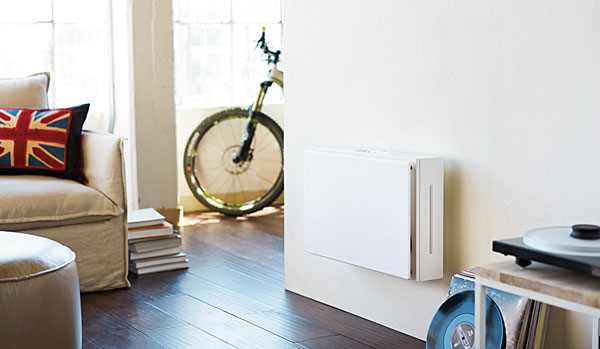
What that told me was that the Habitat1 can get the job done for day-to-day watching in a bedroom or a small den or media room. But could it cut it for serious movie watching?
To find out, I put on the Blu-ray of Rise of the Guardians and skipped right to chapter 6, the scene where the villain, Pitch Black (Jude Law) lays out his diabolical plans. This chapter is filled with ominous deep bass tones meant to create an atmosphere of fear, but at the levels I typically like to listen at—peaking out around 98 dB, which is loud but not as loud as a lot of home theater enthusiasts like—the sound was thin, lacking any real shake or oomph. Again, I tried turning up the level, but it didn’t improve much. I also tried playing the same scene using the Hsu minispeakers and the high-level input. While I got a little more bass this way, thanks to the contribution of the Hsus, I still felt the sound lacked oomph.
Conclusions
I couldn’t love the design of the Habitat1 more. It’s beautifully finished, well proportioned, and easy to install, and its wireless transmitter works flawlessly. But considering its high price, modest deep bass, and comparatively low midbass, its applications and appeal are limited. It might be a solution for those who can’t easily place a traditional sub or install an in-wall sub, and who still want a subwoofer that looks nice and blends with their décor to modestly augment large bookshelf, small tower, or in-wall/-ceiling speakers. But typical consumers can find better performance and value elsewhere.


